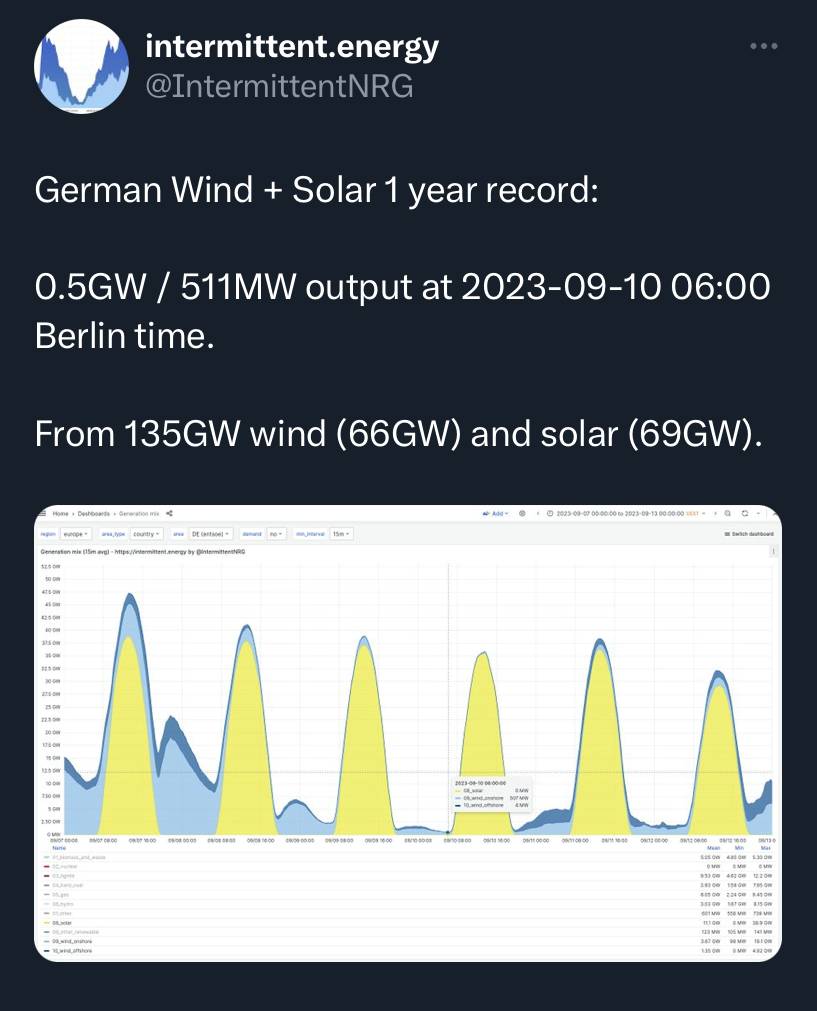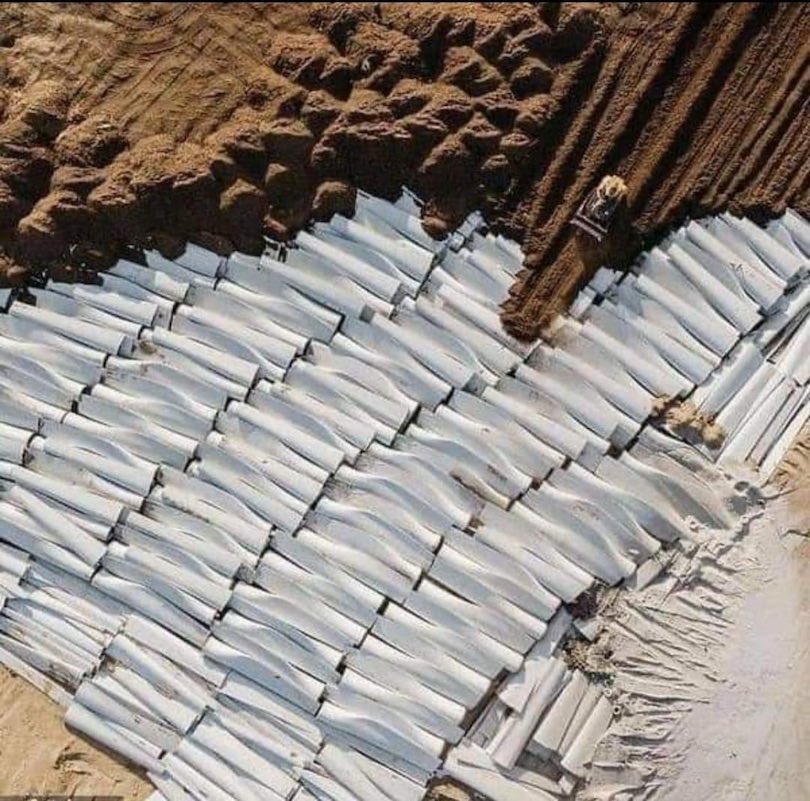posted: September 28, 2023
tl;dr: Windmills have one fatal flaw and numerous other problems...
Windmills? Really? We’re going to take a power generation technology that has been around for more than a thousand years, modernize it, and make it a significant contributor to our energy needs in the 21st century?
Maybe, before we spend too much money on this strategy, we ought to examine why it has failed in the past. I always put more weight on the historical record than I do on projections about the future. In the pre-steam engine, pre-Industrial Age, the Dutch famously used a lot of windmills. I was raised in upstate New York in an area, Schenectady, that was settled by Dutch immigrants, who brought along windmill technology. Yet the major mill towns in New York and New England were powered by water wheels, not windmills. Later, the Dutch invested heavily in petroleum and formed what is today one of the largest fossil fuel companies in the world, Royal Dutch Shell. Why did the Dutch shift away from windmills?
It’s because windmills are unreliable. The wind often does not blow at all, or barely at all, for days at a time. That was true in the 1600s and 1700s, and it is true today. So if you are trying to build a mill to grind grain, if you can find a decent-sized stream or river that runs year round, a water wheel is going to more consistently deliver power than a windmill. A steam engine is more reliable than a water wheel. A fossil fuel burning engine is an even more powerful, more convenient power source than a steam engine, and can more easily power a transportation vehicle. So those older, less reliable power sources faded away, leaving the world heavily dependent upon fossil fuels.
Fast forward to the 21st century. Yes, windmill technology has improved dramatically. The blades are made out of composite materials, and are far larger than the windmills from centuries past. There’s more metal, instead of wood, to support the much larger blades. The generators are high-precision machines. Modern windmills are more efficient than their predecessors, yet they still suffer from the same issue: the wind often does not blow at all, or barely at all.

6:00am on September 10, 2023 was a bad time for renewable energy in Germany
Once again let’s look at the historical record. Germany has installed large numbers of windmills, and solar panels, as part of their renewable energy strategy. I was shocked by a recent Tweet showing the instantaneous power measurements from each of these sources of energy. At 6:00am on September 10, 2023, before the sun was up, the 66GW (gigawatt) of wind “capacity” was producing only 511MW (megawatt), or less than 1% of the rated capacity. That’s absolutely abysmal. Of course solar was producing nothing at that time, but at least the sun rises every day (see the yellow humps in the graph). Wind can go nearly to zero for days at a time.
That creates a huge need for storage, to store energy that can be generated by windmills when the wind is blowing and used by consumers when it is not blowing. Or it creates a need for very high capacity, low-loss, long-distance transmission systems, to import wind-generated electricity from someplace far away where the wind happens to be blowing. Also needed are power-sharing agreements and compensation schemes across political borders that may not always be friendly ones. Wind power is much more unreliable and intermittent than other sources of power, including solar. Power grids need to be designed with the worst case in mind, not just the best case, and the worst case for wind is awful.
That’s enough to eliminate wind as an option if I were designing a low-carbon grid. There are, of course, other problems that windmills have. Some claim that they harm birds and now whales, as companies start to deploy windmills in the ocean. They are eyesores. They can fail in dangerous ways, with blades falling off and towers toppling over, although they are usually deployed where there are few people likely to be around when they fall. But there is one more major problem that I’m concerned about, about which the historical record today is thin but which will grow dramatically over the years ahead: maintenance.

Windmills are supposedly a “renewable” energy source
How long will windmills last, how will they fail, and how much maintenance will be required? By definition they are deployed outside in windy locations, subject to rain and storms. They will be in the path of hurricanes and tornadoes. Water and precision machinery are not a good mix, and salt water is corrosive, as anyone who lives near the ocean knows. There’s a reason why some rich people with exotic car collections house them in Arizona in the Valley of the Sun. It’s the same reason why there’s a huge airplane parking facility between Phoenix and Tucson, where airlines can park planes that they don’t need for a while. The dry desert air is much more gentle on these expensive machines.
Yet offshore windmill installations are underway in a number of countries around the world. Some of them float, instead of being anchored to the ocean floor. How long will these windmills stand up to the waves, storms, rain, and saltwater in the air, before either failing or needing to be repaired (and won’t that be a fun job)? San Diego’s Ocean Beach Pier lasted 56 years before the waves and salt water took their toll, and it is a concrete and steel structure with no moving parts. I would expect windmills to last much a much shorter period of time before needing to be replaced. So all the money being spent on building out windmills will need to be respent after some to-be-determined number of years.
Maybe my windmill skepticism will be proven wrong. That has yet to happen, however, for any of my “Why I am a … skeptic” posts.
Related post: Why I am a smartwatch skeptic
Related post: Why I am a drone skeptic
Related post: Let’s play Amateur EE!
Related post: The difference between power and energy